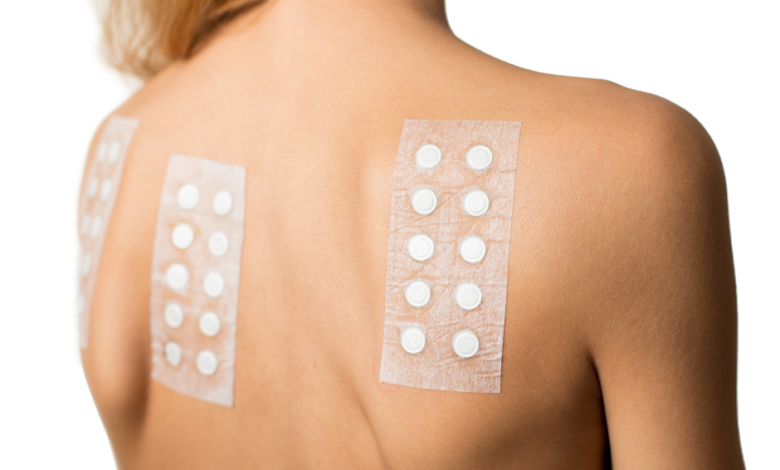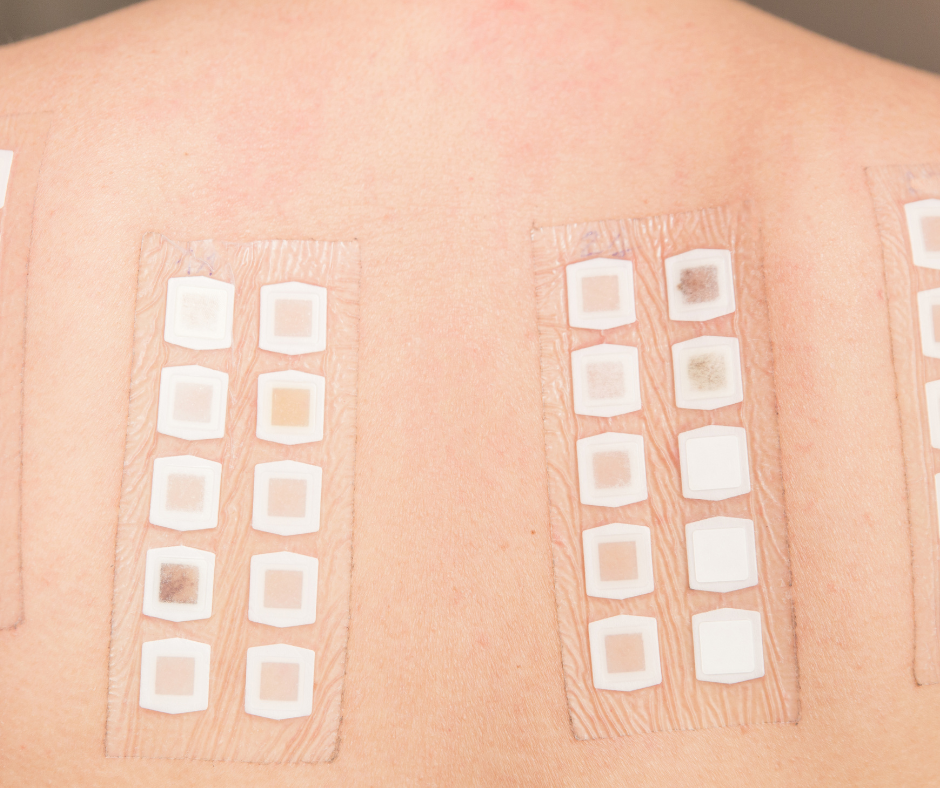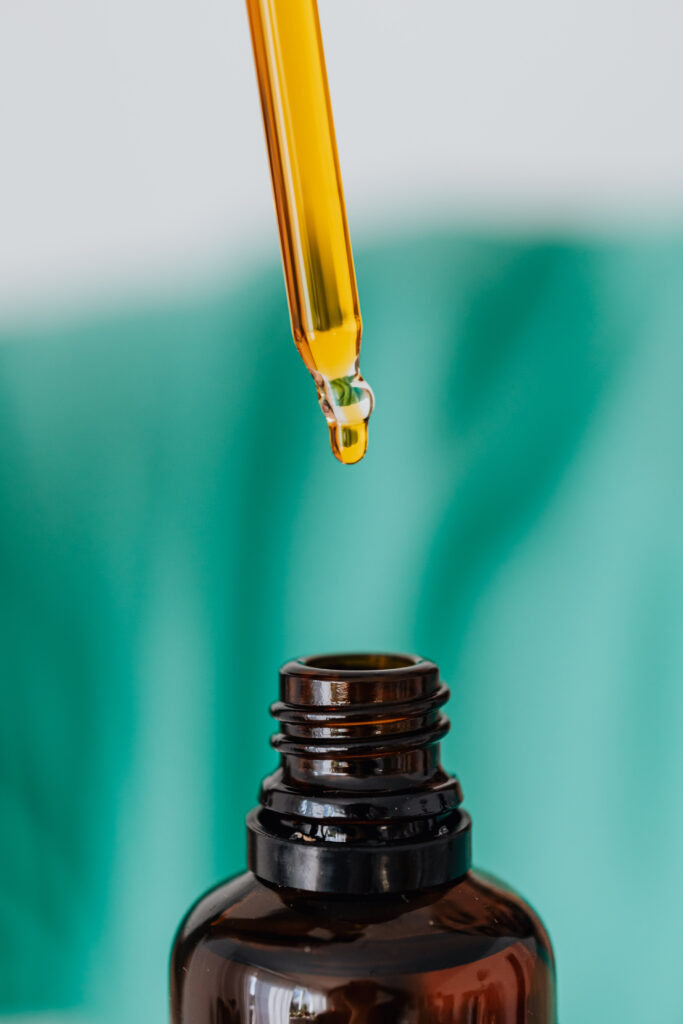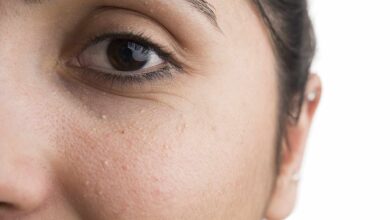
In the competitive world of product development, ensuring the safety and effectiveness of new products is of utmost importance. One crucial step towards achieving this goal is patch testing. Patch testing involves applying small amounts of new products to the skin in order to evaluate their compatibility and potential for causing adverse reactions. In this article, we will explore the reasons why patch testing is essential for new products, the benefits it offers, and how it can help businesses gain the trust of consumers.
What is patch testing?
Definition of patch testing
Patch testing is a diagnostic technique used to determine whether a substance applied to the skin causes an adverse reaction. It involves placing patches containing small amounts of potential allergens or irritants on the skin to assess sensitivity or allergic responses. This controlled testing method helps identify substances that may cause contact dermatitis or other undesirable reactions.
Purpose of patch testing
The primary purpose of patch testing is to identify potential allergic reactions to specific substances. It plays a crucial role in evaluating the safety and effectiveness of new products before they are introduced to the market. By detecting allergies or sensitivities early on, patch tests enable manufacturers to modify formulations, eliminating or reducing the risk of adverse reactions.
Types of patch testing
There are three main types of patch tests commonly performed:
- Contact dermatitis patch testing: This type of patch test aims to identify contact allergens responsible for allergic reactions on the skin. It involves applying panels containing a wide range of potential allergens to determine which substances trigger a response.
- Irritant patch testing: Unlike contact dermatitis testing, irritant patch testing aims to identify irritants that can cause non-allergic adverse reactions. This type of testing assesses the level of irritation caused by substances, such as soaps or metals, to determine their safety and potential to cause skin damage.
- Photo patch testing: Photo patch testing is conducted to identify substances that can cause photoallergic reactions. These reactions occur when the skin is exposed to specific substances that become reactive upon exposure to sunlight or other sources of ultraviolet (UV) radiation.
The importance of patch testing
Identifying potential allergic reactions
Patch testing is crucial in identifying potential allergic reactions to substances used in products. Allergies can range from mild irritation to severe reactions that may require medical attention. By conducting thorough patch testing, manufacturers can detect potential allergens and either eliminate them from the formulation or clearly label them, allowing consumers to make informed decisions.
Preventing negative side effects
Patch testing helps prevent negative side effects by identifying irritants that can cause skin damage, dryness, or itching. By conducting patch tests before the product is launched, manufacturers can identify potential irritants and adjust the formulation to ensure the product’s safety and efficacy.
Ensuring product safety and effectiveness
Patch testing is essential in ensuring the safety and effectiveness of new products. By detecting potential problems early on, manufacturers can modify formulations or make necessary adjustments to avoid adverse reactions, ensuring their products can be used safely by consumers.

When should patch testing be conducted?
Prior to product launch
Patch testing should be conducted before a product is launched to identify potential allergens, irritants, or photoallergens. By conducting patch tests during the product development phase, manufacturers can make necessary adjustments to improve safety and mitigate the risk of adverse reactions before the product reaches the market.
After formulation changes
Patch testing should also be conducted after any significant formulation changes. Alterations in ingredients or concentrations can potentially introduce new allergens, irritants, or photoallergens. Conducting patch tests after such modifications allows manufacturers to ensure that the changes do not pose any additional risks to consumers.
For sensitive target markets
Certain consumer groups, such as individuals with sensitive skin or known allergies, require extra consideration. Conducting patch testing for these sensitive target markets becomes even more critical because they are more susceptible to adverse reactions. By understanding the specific sensitivities of these groups through patch testing, manufacturers can tailor their products to meet their needs and minimize the risk of negative reactions.
The patch testing process
Selecting the appropriate test subjects
To obtain accurate results, it is crucial to select suitable test subjects for patch testing. Test subjects should represent the target market for the product and may include individuals with known allergies or sensitivities. Additionally, test subjects should be carefully selected to ensure diversity in age, gender, and skin type to capture a comprehensive understanding of potential reactions.
Choosing the test site
The test site for patch testing is typically the upper back area, as it provides a relatively large, flat surface for applying the patches. This location also allows easy access for monitoring and recording reactions. Another important consideration is avoiding areas where the skin may be compromised or sensitive, such as areas with open wounds or rashes.
Applying the patch test
Patch tests involve applying patches containing potential allergens or irritants to the selected test site. These patches are left in place for 48 to 72 hours, allowing the substances to come into contact with the skin and trigger any potential reactions. During this period, it is important to instruct the subjects to avoid excessive sweating or activities that could disrupt the patches.
Monitoring and recording reactions
Throughout the patch testing period, it is essential to carefully monitor and record any reactions that occur. This includes documenting the severity of the reaction, such as redness, swelling, or itching, and noting the specific substances that caused the reaction. Accurate and detailed recording of reactions allows for more informed analysis and interpretation of results.
Interpreting and analyzing results
After the patch testing period is complete, the results are interpreted and analyzed to determine the safety and suitability of the tested substances. This analysis involves comparing the reactions observed in the test subjects with known allergens or irritants to identify potential problem substances. Manufacturers can then make informed decisions based on the results to ensure product safety and efficacy.

Common allergens to include in patch testing
Fragrances and perfumes
Fragrances and perfumes are common allergens that can cause skin sensitization and allergic reactions. Patch testing with a wide range of fragrance components is essential to identify potential triggers and ensure that products are formulated in a way that minimizes the risk of adverse reactions.
Preservatives
Preservatives are essential for preventing microbial growth in products, but they can also pose a risk of skin irritation or allergies. Patch testing allows manufacturers to identify specific preservatives that may cause adverse reactions and find alternatives that are safer for consumers.
Essential oils
While essential oils are derived from natural sources and are often associated with beneficial properties, they can also cause skin allergies or irritations. Patch testing helps identify specific essential oils that may trigger reactions, ensuring their safe use in products.
Dyes and colorants
Dyes and colorants are commonly used in various products, including cosmetics and textiles. Certain dyes may cause allergic reactions, such as redness or swelling when applied to the skin. Patch testing aids in identifying problem dyes or colorants and allows manufacturers to ensure their products are safe for use.
Metals
Metals, such as nickel or cobalt, are frequent allergens that can cause allergic contact dermatitis. Patch testing enables the identification of metals that may cause reactions, allowing manufacturers to minimize their presence in products.
Common irritants
Patch testing should also include common irritants, such as certain soaps or abrasive substances. These irritants may not trigger allergic reactions but can still cause skin irritation or damage. Identifying irritants aids in formulating products with a reduced potential for adverse effects.
The benefits of patch testing
Reducing the risk of adverse reactions
Patch testing significantly reduces the risk of adverse reactions by identifying potential allergens, irritants, or photoallergens before products are launched. By removing or minimizing these substances, manufacturers can create safer and more tolerable products for consumers.
Enhancing consumer trust
By incorporating patch testing into the product development process, manufacturers demonstrate their commitment to consumer safety. Consumers are more likely to trust products that have undergone thorough testing and have been proven to be safe for use.
Avoiding product recalls and lawsuits
Patch testing reduces the likelihood of product recalls or legal issues arising from adverse reactions in consumers. By proactively identifying and addressing potential problems, manufacturers can mitigate the risk of costly recalls or legal claims, protecting both their reputation and financial standing.
Gaining a competitive edge
Incorporating patch testing into product development can give manufacturers a competitive edge in the market. By highlighting their commitment to safety and product efficacy, companies can differentiate themselves and attract consumers who prioritize the wellbeing of their skin.
Patch testing regulations and guidelines
Regulatory requirements
Regulatory bodies, such as the U.S. Food and Drug Administration (FDA) and the European Medicines Agency (EMA), have specific guidelines and requirements for patch testing. Manufacturers must comply with these regulations to ensure their products meet the necessary safety standards.
Industry standards
Apart from regulatory requirements, various industry organizations and associations provide standards and guidelines for patch testing. Following these industry standards helps manufacturers align their practices with best practices and ensures consistency in methodology and interpretation of results.
International guidelines
International guidelines, such as those provided by the International Contact Dermatitis Research Group (ICDRG) or the International Confederation of Societies of Cosmetic Chemists (IFSCC), offer additional guidance and insights into patch testing methodologies. Complying with international guidelines helps ensure broader acceptance and recognition of the results obtained through patch testing.
Considerations for different product categories
Cosmetics and personal care products
Patch testing for cosmetics and personal care products is critical due to the direct contact these products have with the skin. Considering the various ingredients used in cosmetics and the potential allergenicity or irritancy associated with them, thorough patch testing is vital to ensure consumer safety and satisfaction.
Pharmaceuticals and medical devices
Pharmaceuticals and medical devices require meticulous patch testing to identify potential adverse reactions that could compromise patient safety. These products often come into direct contact with the skin or mucous membranes, making patch testing an integral part of their regulatory approval process.
Textiles and clothing
Certain dyes, chemicals, or metals used in textiles and clothing can cause allergic reactions or skin irritation. Patch testing textiles and clothing helps manufacturers ensure that their products are safe for use and do not pose any risks to consumers, particularly those with sensitivities or allergies.
Other household goods
In addition to cosmetics, pharmaceuticals, and textiles, patch testing is also applicable to other household goods, such as cleaning products, paints, or adhesives. Identifying potential skin irritants or allergens in these products helps protect consumers from adverse reactions.
Challenges and limitations of patch testing
Variability of individual reactions
Individuals may react differently to the same substance, making the interpretation of patch test results challenging. Factors like age, gender, skin type, and underlying conditions can affect the severity and nature of reactions. These variations highlight the importance of considering multiple factors when interpreting patch test results.
Limitations in predicting real-world usage scenarios
Patch testing provides valuable insights into potential reactions, but it may not fully replicate real-world usage scenarios. Factors like repeated or prolonged exposure, environmental conditions, or interactions with other substances may impact the likelihood or severity of adverse reactions. Therefore, while patch testing is essential, it should be complemented with additional safety measures and consumer feedback.
Ethical considerations
Conducting patch tests on human subjects raises ethical considerations, particularly when testing on individuals with known allergies or sensitivities. Researchers and manufacturers must ensure the safety and wellbeing of test subjects and obtain informed consent. Ethical guidelines and oversight bodies play a crucial role in ensuring the ethical conduct of patch testing studies.
Cost and time constraints
Patch testing can be time-consuming and costly, particularly when involving a large number of test subjects or a diverse range of potential allergens. Manufacturers must carefully balance the need for comprehensive testing with the practical constraints of time and budget to ensure thorough evaluations without compromising product development.
Future trends in patch testing
Advancements in alternative testing methods
In the future, advancements in alternative testing methods, such as in vitro models or computational modeling, may complement or even replace traditional patch testing. These methods can provide additional insights and help overcome some of the limitations of patch testing, enhancing the safety and efficiency of product development.
Technological innovations
Technological innovations, such as wearable sensors or smart patches, have the potential to revolutionize patch testing. These innovations can improve monitoring and data collection, allowing for real-time tracking of reactions and facilitating more accurate analysis and interpretation of results.
Focus on personalized skincare
With growing interest in personalized skincare, patch testing may become more tailored to individual needs and preferences. Advances in genetic testing or biomarker identification may enable personalized patch testing that considers an individual’s unique characteristics and sensitivities, resulting in customized skincare solutions.
Increased collaboration between industry and academia
Future trends in patch testing are likely to involve increased collaboration between industry and academia. This collaboration can foster the exchange of knowledge, resources, and expertise, enabling the development of more comprehensive and reliable patch testing methodologies.
In summary, patch testing plays a vital role in evaluating the safety and efficacy of new products. By identifying potential allergens and irritants, it helps reduce the risk of adverse reactions and ensures consumer safety. Conducting patch testing prior to product launch, after formulation changes, and for sensitive target markets is crucial.
While patch testing has its limitations, it remains an essential tool for product development and can be supplemented with alternative testing methods in the future. Patch testing regulations, guidelines, and industry standards provide a robust framework for manufacturers to follow, ensuring compliance and consistency. By embracing the benefits of patch testing, manufacturers can gain a competitive edge, enhance consumer trust, and avoid costly recalls or legal issues, ultimately delivering safe and effective products to the market.




